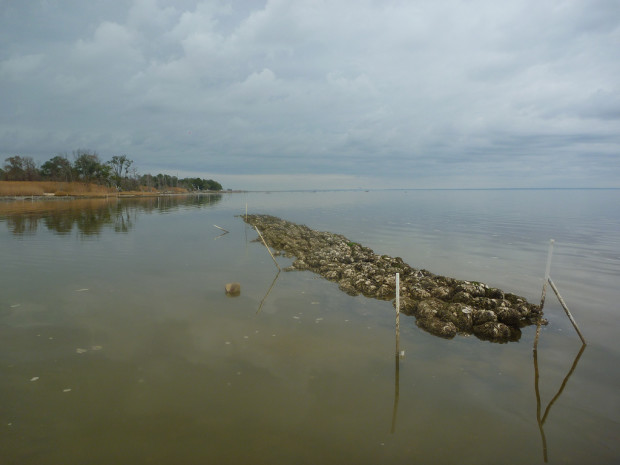We have much more to do and your continued support is needed now more than ever.
Artificial Reefs: Restoration Beyond Recreation?
Over the past few decades the five Gulf States have built artificial reefs both inshore and offshore with the aim of enhancing recreational fishing and diving opportunities. State and local governments on the Gulf Coast have expressed interest in creating additional artificial reefs with some of the money from the federal funds resulting from the BP oil disaster.

It is important to make sure these projects are funded appropriately and implemented using the best available science.
Artificial Reef Science: Are We There Yet?
A number of environmental and economic considerations should be considered when planning and designing new artificial reef projects. Water quality, wave interaction, bottom composition, reef profile, and materials used for construction are just a few things that can influence the effectiveness of these habitats, or potentially cause harm to adjacent habitats.
For a more comprehensive look at Gulf State artificial reef programs and key considerations in implementation or management, please take a look at NWF’s new white paper: Artificial Reefs of the Gulf of Mexico: A Review of Gulf State Programs & Key Considerations.

The bottom line is that scientists are still working to unravel the functionality of artificial reefs. Some experts believe that artificial reefs can function comparably to natural reef communities. Others argue that artificial reefs merely attract existing fish from the adjacent open water habitat, forming more dense fish aggregations. Only time, and additional research, will tell.
Natural Reefs vs. Artificial Reefs
Artificial reef projects are designed to enhance recreational fishing opportunities. Reef restoration projects are designed to restore the ecological functions provided by reef systems. In cases where materials of similar type and size to historical or natural habitats—such as oyster reefs—are placed in nearshore waters in order to help the recovery of related ecological services, the term “artificial reef” is misleading. Because reef restoration projects can restore or replace “natural resources, habitats, or natural resource services” damaged by the Deepwater Horizon oil disaster, they may qualify as an appropriate use of Natural Resource Damage Assessment funding, or even other spill-related resources like the RESTORE Act and the National Fish & Wildlife Foundation Gulf Environmental Benefit Fund.
Loss of Human Use?
Artificial reefs develop communities of encrusting organisms and thus attract fish, but studies have shown that the communities that develop on artificial reefs remain quite different from those on natural reefs. Because artificial reef projects don’t serve to replace or restore the harm to natural resources, they have a more limited source of appropriate spill-related funding.

These types of projects could help to restore or replace the loss of human use stemming from the Deepwater Horizon disaster:
- The oil disaster resulted in significant closures of recreational fishing, boating and swimming ground. Scaled appropriately, artificial reefs could help compensate the public for lost access (or “human use”) to the Gulf of Mexico by generating new opportunities for angling, snorkeling, and engaging in other recreational activities.
- Artificial reef projects intended to restore or replace existing artificial reefs that were harmed during the oil disaster would be a justifiable use under the Natural Resources Damage Assessment process.
The Gulf of Mexico is an economic powerhouse and a national treasure. Natural and restored reef habitats can help make it whole again in the wake of the disaster. Strategic and appropriate investment of spill-related funding to restore its use, wildlife habitats, water quality and diversity of ecosystems will pay environmental and economic dividends for generations to come.
![]() Ask the Secretary of Commerce to make sure that BP’s oil spill penalties are dedicated solely to research and the restoration in the Gulf of Mexico!
Ask the Secretary of Commerce to make sure that BP’s oil spill penalties are dedicated solely to research and the restoration in the Gulf of Mexico!






















